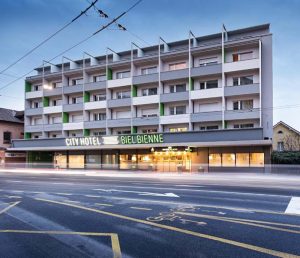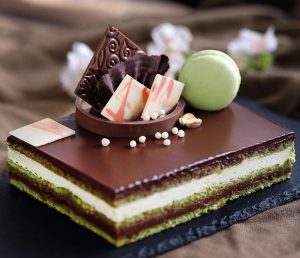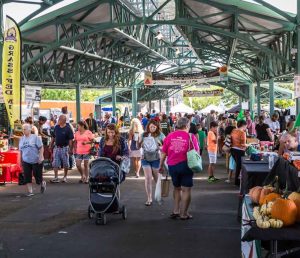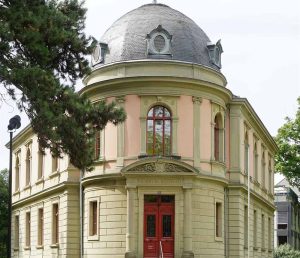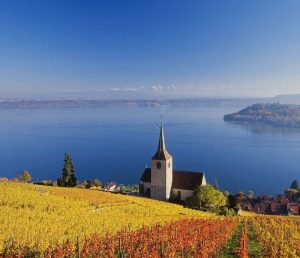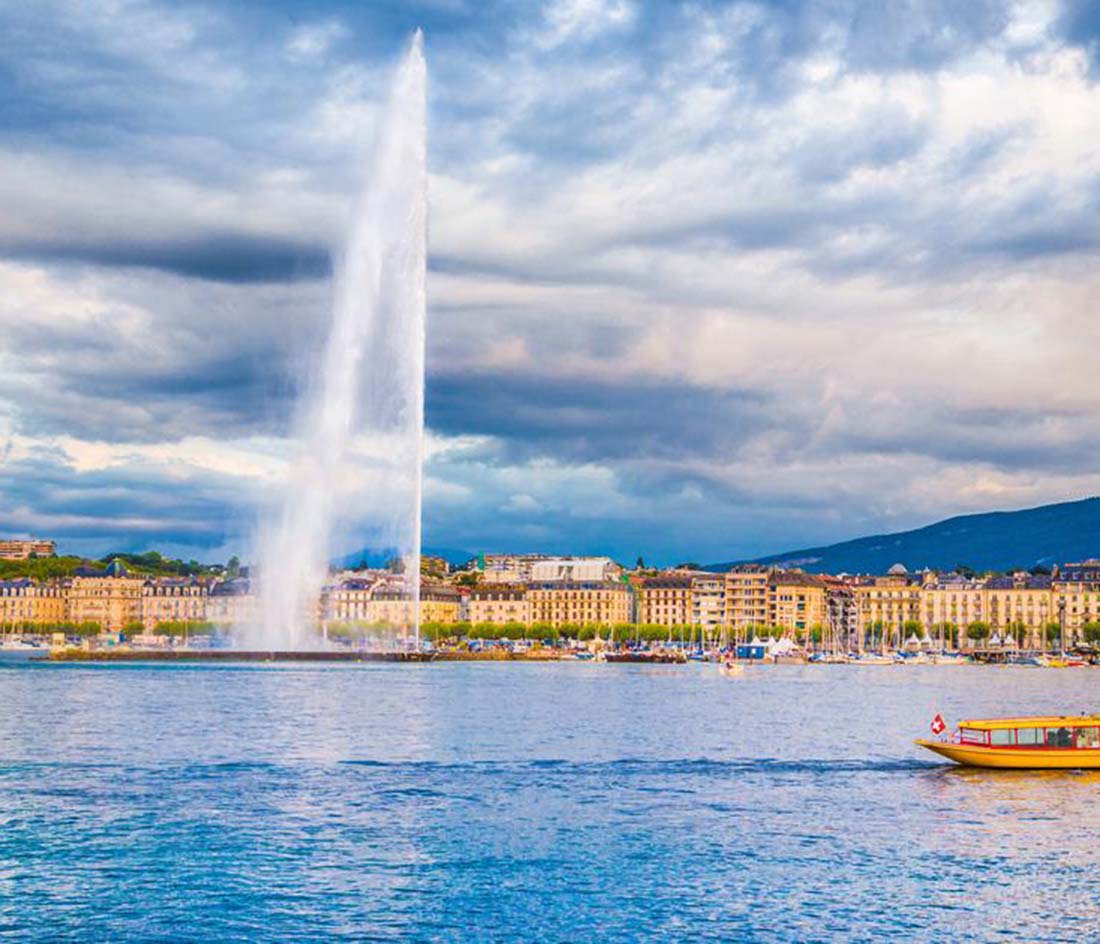
Visiting Geneva for the first time was an experience that I’ll never forget. This beautiful Swiss city, known for its pristine lakes, international organizations, and stunning landscapes, offers a unique blend of natural beauty and rich history. As I wandered through its streets, I was struck by how seamlessly Geneva blends the old with the new, the local with the global.
1. Jet d’Eau: The Iconic Fountain of Geneva
When I arrived in Geneva, the first landmark that caught my eye was the Jet d’Eau, the city’s most iconic symbol. This towering water fountain shoots water 140 meters (459 feet) into the air, creating a stunning visual spectacle against the backdrop of Lake Geneva and the surrounding Alps.
Location: The Jet d’Eau is located at the point where Lake Geneva meets the Rhone River, near the Jardin Anglais (English Garden).
How to Get There: I found that the fountain is easily accessible by foot from most parts of the city center. If you’re staying nearby, you can walk along the lakeside promenades and take in the views of the fountain from different angles. Public transport options include taking the tram to the Molard or Bel-Air stops, both of which are a short walk away.
Experience: As I approached the Jet d’Eau, I could hear the roar of the water before I even saw it up close. Standing near the base, I felt the mist from the fountain, which was refreshing on a warm day. The fountain is most impressive in the late afternoon when the sunlight creates rainbows in the mist—a perfect photo opportunity.
Tips: If you want to see the fountain illuminated, visit at night when it’s beautifully lit up. The best views are from the opposite side of the lake, near the Quai Gustave-Ador.
2. The United Nations Office at Geneva (Palais des Nations)
As someone deeply interested in global affairs, visiting the United Nations Office at Geneva was a highlight of my trip. The Palais des Nations is not just a hub of international diplomacy but also a place of great historical significance.
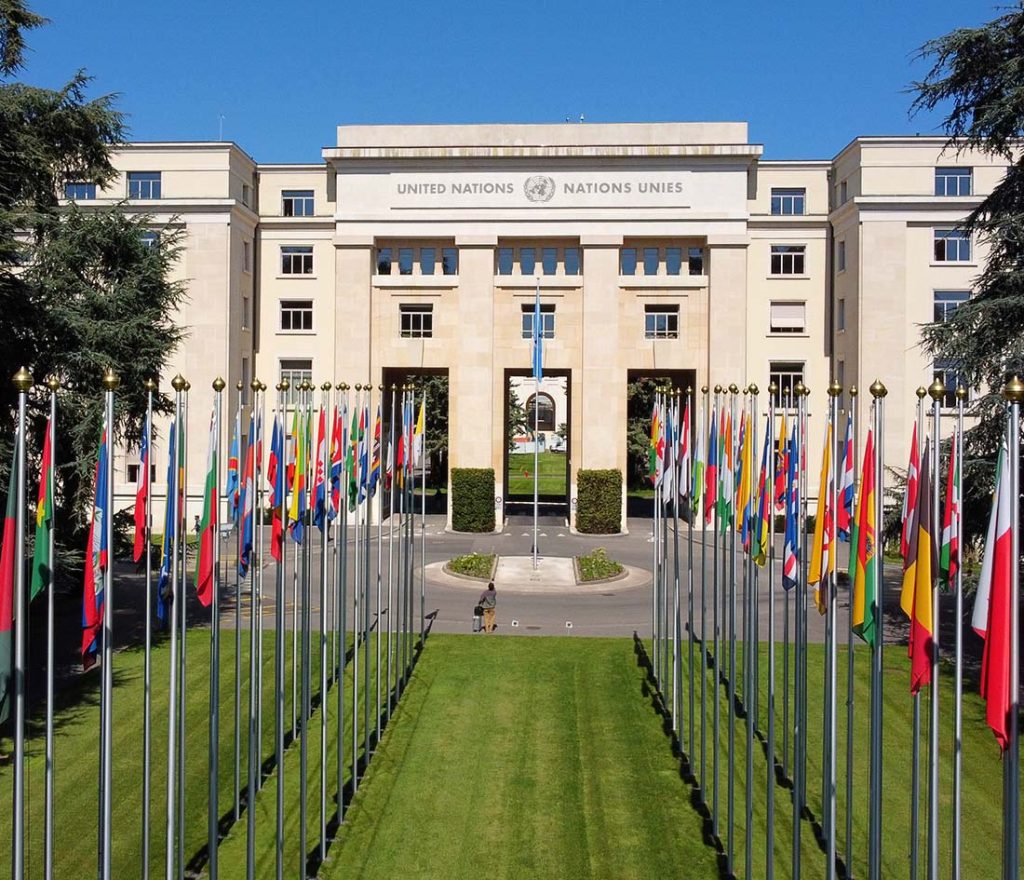
Location: The Palais des Nations is situated in the Ariana Park, just northeast of the city center.
How to Get There: I took the tram to the Nations stop, and from there, it was a short walk to the entrance. You can also take buses 5, 8, 11, and 28, all of which stop nearby.
Experience: When I arrived, I joined one of the guided tours, which I highly recommend. The tour took us through the Assembly Hall, the Council Chamber, and the Human Rights and Alliance of Civilizations Room, where we saw murals and artworks donated by various countries. The guide shared fascinating stories about the building’s history and the significant events that have taken place there.
Tips: Make sure to bring your passport for entry, as it’s required for security purposes. Also, book your tour in advance, especially during peak tourist seasons, to avoid long wait times.
3. St. Pierre Cathedral: A Journey Through Time
Exploring Geneva’s Old Town, I stumbled upon St. Pierre Cathedral, a majestic structure that dominates the city’s skyline. This cathedral is a must-see not only for its architectural beauty but also for its historical and archaeological significance.
Location: St. Pierre Cathedral is located in the heart of Geneva’s Old Town, on the highest point of the city.
How to Get There: The cathedral is a short walk from the Place du Bourg-de-Four, the oldest square in Geneva. I found it easy to navigate the narrow, winding streets of the Old Town on foot.
Experience: The first thing that struck me was the cathedral’s exterior, with its mix of Romanesque and Gothic styles. Inside, the cathedral is relatively austere, reflecting its Protestant heritage. However, what made my visit truly memorable was the opportunity to explore the archaeological site beneath the cathedral. Here, I walked through the remnants of earlier churches dating back to the 4th century, giving me a deep sense of the city’s ancient history.
I also climbed the tower, which required ascending a narrow spiral staircase, but the effort was well worth it. From the top, I was rewarded with panoramic views of Geneva, Lake Geneva, and the distant mountains.
Tips: Entry to the cathedral is free, but there is a small fee for visiting the archaeological site and climbing the tower. The best time to visit is in the morning or late afternoon when the light is soft, making the views from the tower even more spectacular.
4. The Flower Clock (L’Horloge Fleurie): A Symbol of Geneva’s Love for Precision
One of the most charming and quintessentially Swiss landmarks I encountered in Geneva was the Flower Clock, located in the Jardin Anglais. This unique timepiece combines Geneva’s famous watchmaking tradition with the city’s love for horticulture.
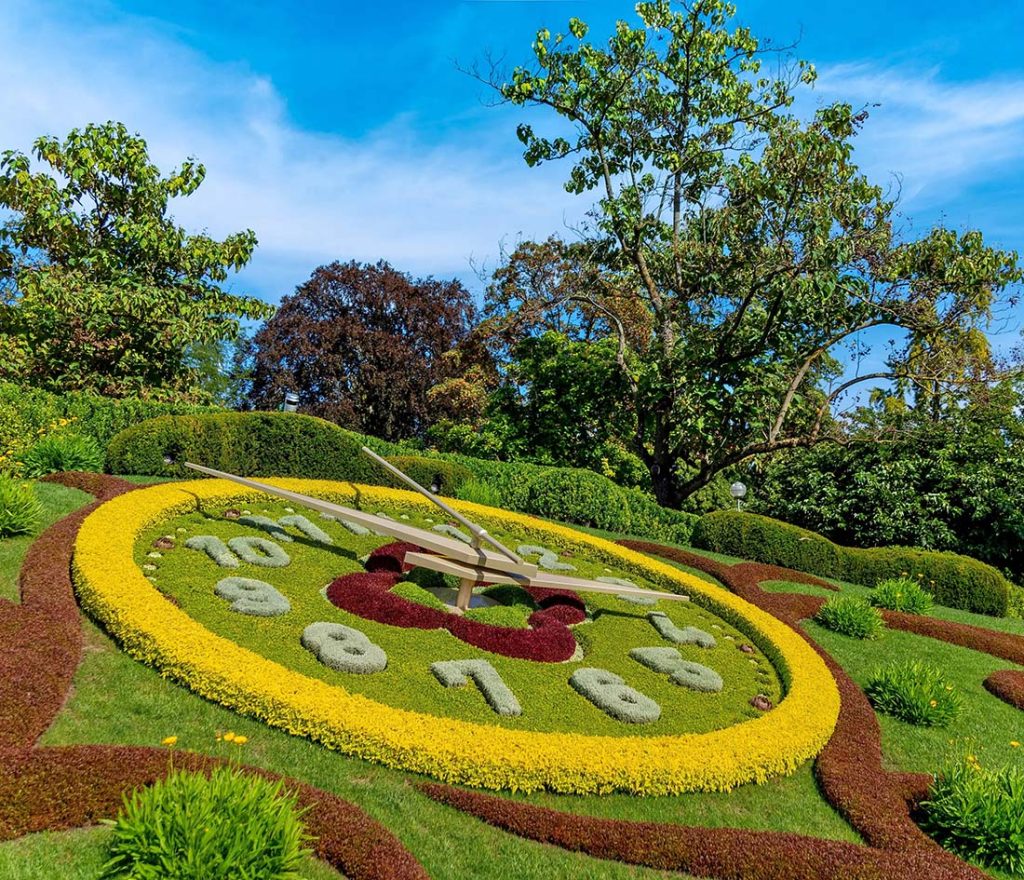
Location: The Flower Clock is situated in the Jardin Anglais, near the lakeshore and just a short walk from the Jet d’Eau.
How to Get There: You can easily reach the Jardin Anglais by tram or bus, getting off at the Molard or Bel-Air stops. From there, it’s a brief walk to the park.
Experience: Seeing the Flower Clock for the first time, I was amazed by its vibrant colors and intricate design. The clock face is made up of thousands of flowers, which are changed seasonally to reflect different themes. It’s not just a decorative piece—the clock actually keeps accurate time, powered by Geneva’s world-renowned precision mechanics.
Tips: The Flower Clock is a popular spot for photos, so be prepared to wait for your turn to capture the perfect shot. I found early morning or late evening to be the best times for a quieter experience.
5. Maison Tavel: Geneva’s Oldest House and a Window into the Past
Maison Tavel is a hidden gem that offers a fascinating glimpse into Geneva’s past. As the city’s oldest house, now a museum, it tells the story of Geneva through its many exhibits.
Location: Maison Tavel is located in the Old Town, just a short walk from St. Pierre Cathedral.
How to Get There: It’s easiest to reach Maison Tavel by foot when exploring the Old Town. The nearest tram stop is Bel-Air, from where you can walk through the historic streets.
Experience: As I walked through the house, I was transported back in time. The museum’s exhibits cover everything from the medieval period to the 19th century, showcasing the everyday life of Genevans over the centuries. One of the highlights was the detailed 3D map of Geneva in 1850, which gave me a clear picture of how the city has evolved.
The building itself is an exhibit, with its thick stone walls and wooden beams telling their own story. Maison Tavel provided me with a deeper understanding of Geneva’s history, far beyond what I had learned from guidebooks.
Tips: Admission to Maison Tavel is free, making it an excellent option for budget travelers. Plan to spend at least an hour exploring the museum’s various floors.
6. Parc des Bastions and the Reformation Wall: A Tribute to Geneva’s Role in Religious History
Geneva’s role in the Protestant Reformation is commemorated in the Reformation Wall, a monument that I found both impressive and thought-provoking. Located in the serene Parc des Bastions, it’s a great place to reflect on the city’s historical significance.
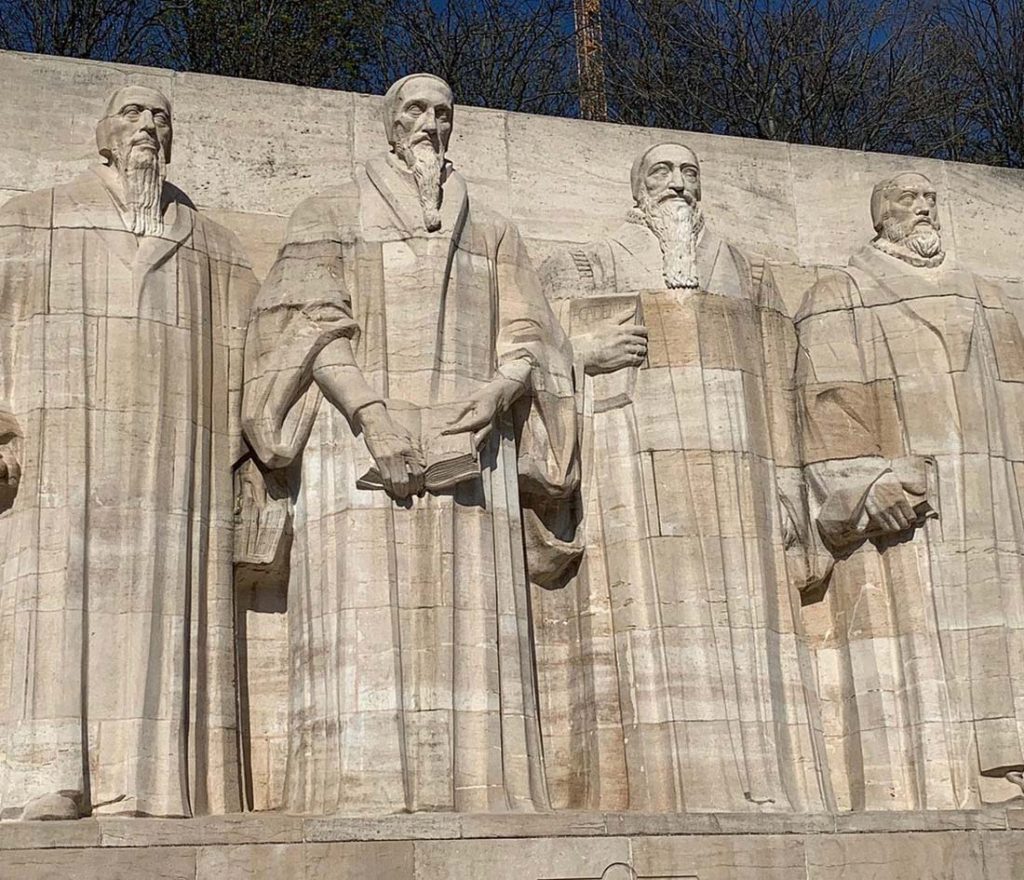
Location: The Reformation Wall is located within Parc des Bastions, which is adjacent to the University of Geneva.
How to Get There: I took a tram to the Place de Neuve stop, which is right next to the park. From there, it’s just a short walk to the monument.
Experience: The Reformation Wall is an imposing structure, with statues of key figures from the Reformation, including John Calvin, towering over the park. The wall is engraved with Geneva’s motto, “Post Tenebras Lux” (“After darkness, light”), reflecting the city’s pivotal role in the Reformation.
The park itself is a lovely place to relax, with tree-lined paths, benches, and even a giant chessboard where locals gather to play. I spent some time here simply enjoying the peaceful atmosphere and reflecting on the historical events that shaped modern Geneva.
Tips: The park is particularly beautiful in the spring and autumn when the trees are in bloom or the leaves are changing color. It’s also a great spot for a picnic if you’re looking to enjoy some time outdoors.
Making the Most of Your Visit to Geneva
My time in Geneva was filled with discoveries, from iconic landmarks like the Jet d’Eau to hidden historical treasures like Maison Tavel. Each site I visited offered a unique perspective on the city’s rich history, cultural heritage, and natural beauty.
For first-time visitors, I recommend taking the time to explore these landmarks at your own pace. Geneva is a city that rewards slow travel, where every street and park has a story to tell. Whether you’re gazing at the Jet d’Eau, walking through the halls of the United Nations, or simply enjoying a coffee in the Old Town, you’ll find that Geneva’s charm lies in its ability to blend the past with the present.
